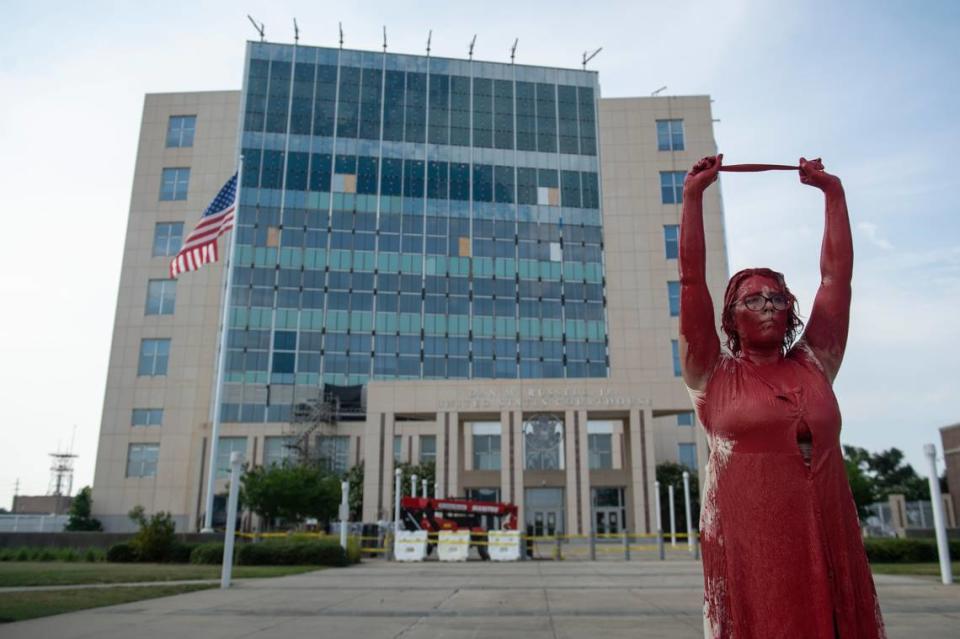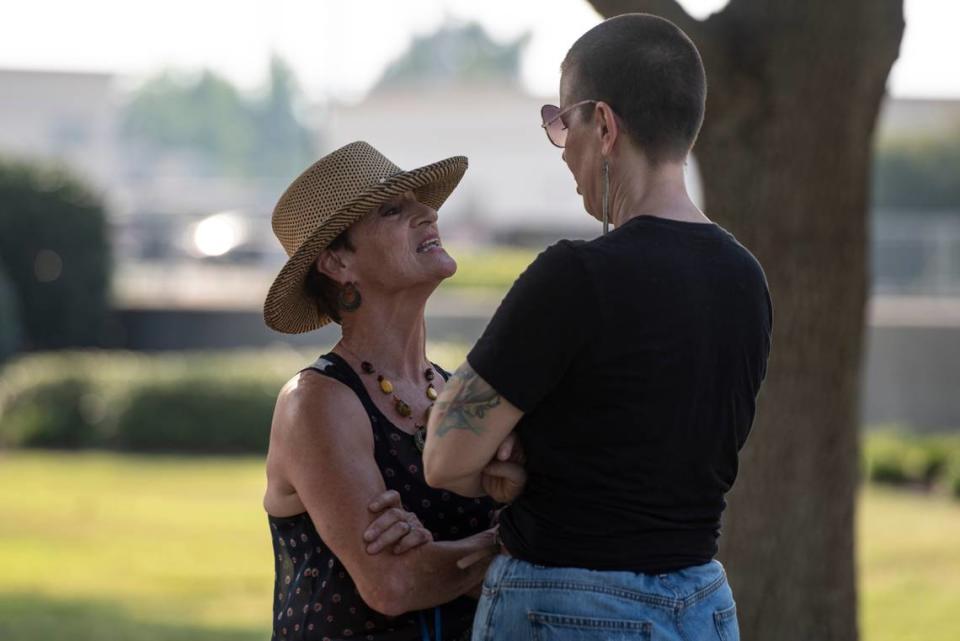Predictions of soaring birth rates in Mississippi after abortion ban didn’t come true
Mississippi birth numbers are roughly the same as last year, despite the state health department predicting at least 5,000 a year more from a nearly total abortion ban.
However, analysis of data shows that unwanted or unplanned pregnancies increased in every ban state – with Mississippi having the second-highest estimated increase.
Mail-order abortion pills and the opening of new abortion clinics aimed at serving those in red states are likely among the reasons Mississippi didn’t see the large spike in births state officials expected. Still, diminished accessibility meant that the ban prevented about one-fourth of Mississippi women who might have otherwise sought an abortion from attaining one, according to recent research published in November by the Institute of Labor Economics.
Birth numbers vary from year to year based on a variety of factors, and do not, therefore, provide a complete picture on their own of the effects the Dobbs Supreme Court decision had on fertility – the number of children born to women of reproductive age. The study uses a statistical method called Synthetic Difference-in-Differences to compare ban states to selected non-ban states post-Dobbs.
“Basically, what it does is it lets us compare changes in births in states enforcing total bans to changes in births in states that are a good set of controls for what would have happened if total bans hadn’t been enforced,” explained Caitlin Myers, a professor of economics at Middlebury College in Vermont and an author of the study.
In order to be a meaningful comparison, the non-ban states chosen for the control group are ones that trended similarly to the ban states pre-Dobbs. This comparison can then be used to estimate how many more births occurred in ban states than would have in the absence of a ban.
The largest estimated increases were in states that had the largest increases in driving distances to abortion clinics. Texas, which had a 453-mile increase, saw a 5.1% increase in births. Mississippi, where driving distance increased by 240 miles, saw a 4.4% increase in births.
Births have been on a steady decline in Mississippi since 2007. That decline has slowed in the past year, according to Mitchell Adcock, executive director of the Center for Mississippi Health Policy.

“Since 2022, when the Mississippi law related to the US Supreme Court’s Dobbs decision was implemented, the decline in Mississippi births in 2023 has slowed,” Adcock explained. But, he said, “it will take more time before the impact of the Dobbs decision on birth rates in Mississippi can be determined.”
While the slower declining rate of births cannot yet be directly attributed to Dobbs, there is compelling evidence that it played a role. The data shows that the group of ban states and the set of controlled states trended extremely similarly – right up until the abortion bans began to be enforced.
“And then we see the births diverge,” said Myers. “So for it to be something other than Dobbs and the bans that are increasing those births, you’d have to believe that something else happened that wasn’t an abortion ban, and it happened at the same time, in all 13 states, and not at all in these controlled states that the model picked. Which is pretty hard to believe.”
While births likely did increase in Mississippi relative to what they may have been in the absence of a ban, they did not increase to the heights state officials expected.
Mississippi officials likely based their 5,000 more births estimate on the number of resident abortions that took place in past years, Myers said. In 2020, the number of Mississippi resident abortions – those occurring in and out of state – was 5,760.
State Health Officer Dr. Daniel Edney said “we’ve known from the beginning it wouldn’t be a one-to-one [correspondence], one induced termination equals one live birth … there are a lot of variables that are ongoing.” Yet, the department predicted in a Sept. 28, 2022 hearing that the state would see an influx of at least 5,000 extra births they were not prepared to handle.
“It really sounds like what they were assuming was that the ban would prevent most people in Mississippi who wanted abortions from getting them,” Myers said. “And that is not a realistic assumption. A lot of people from Mississippi are traveling and people will also self manage abortions.”

The 26.9% of Mississippi abortion seekers the study estimated were not able to travel or self manage their abortions in the wake of Dobbs are likely lower-income people unable to afford the trip out of state, or those in rural maternity care deserts who didn’t find out they were pregnant until well into their pregnancy.
What’s more is that the number of in-state abortions has plummeted to nearly zero – despite the fact that Mississippi’s abortion ban has two exceptions: to protect the life of the mother, and cases where the pregnancy was caused by rape and officially reported to law enforcement.
Cases like Ashley, the 13-year-old Delta girl TIME magazine wrote about who was raped and forced to carry her baby to term, show that the exceptions are largely theoretical. Lack of education and fear of legal consequences are what render the exceptions practically meaningless, according to Tyler Harden, the Mississippi state director of Planned Parenthood Southeast.
“A lot of people aren’t aware of the exceptions,” Harden said. “We’ve witnessed lots of misinformation campaigns targeted at people who need abortion access … and even providers sometimes giving misinformation to their patients because they don’t understand what they can and can’t do legally.”
In 2023, there were only four in-state abortions in Mississippi.
Aid Access, the only online telemedicine service supplying medication abortion via mail in the U.S., is currently getting about 250 requests each month from Mississippians, according to Aid Access Founder Dr. Rebecca Gomperts.
Mississippi had the second largest increase in Aid Access requests from pre- to post-Dobbs. Aid Access offers a combination of Mifepristone and Misoprostol for first trimester abortions up to 10 weeks. Since shipping takes one to five days for all 50 states, a patient should be less than nine weeks when ordering the medication.
For those who are more than nine weeks pregnant, the closest abortion clinic to Jackson is the Alamo Women’s Clinic in Southern Illinois, 425 miles away. The clinic was opened by father-daughter duo Alan Braid and Andrea Gallegos in November 2022, after the Dobbs ruling forced Braid and Gallegos to move their Texas and Oklahoma clinics to New Mexico and Illinois.
“We’ve officially been open a year and we’re doing exactly what we thought being in this location would do,” Gallegos said about her Illinois clinic. “We see patients from every surrounding ban state every day.”
Mississippians accounted for 12% of the 4,551 patients the Alamo clinic has served in the last year. At 576 abortions, that’s nearly six times as many Illinois patients the location served.
Those who can make the journey do – and Gallegos says she’s amazed at just how many do. But, she says, there will always be a fraction of people for whom that kind of travel is unfeasible.
“I think it’s a shame that abolishing Roe has basically made geography a privilege when it comes to accessing abortion,” she said.
It can be easy to forget the situation most abortion seekers are in that leaves a significant number of them unable to cover the cost and surmount the time challenges of increased driving distances. Three quarters of abortion patients are low-income, 59% are already parenting, and 55% report facing a disruptive life event, such as losing a job, breaking up with a partner, or getting evicted.
“Sometimes I’ll present estimates of effects of driving distance,” Myers said, “and economists will be like ‘well my gosh, this is such an important life event, with such huge consequences, everybody should just find a way out, right?’” But she explained, “look at the situation that people are in when they seek abortions … it’s not so implausible that around a quarter of them aren’t able to figure out a way to mail order medication or to drive more than 200 miles one way to Southern Illinois.”

